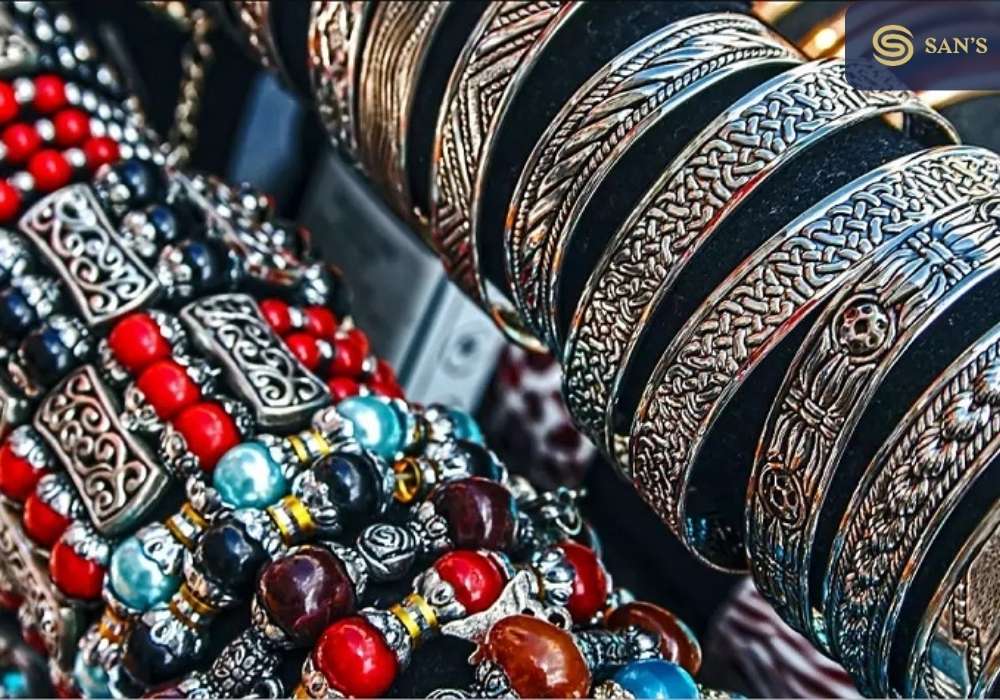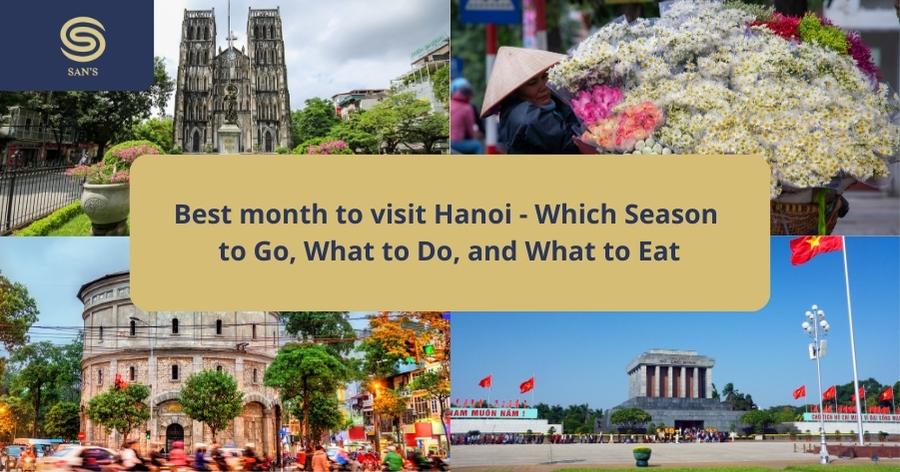Nestled in the heart of Hanoi’s iconic Old Quarter lies a street that has been silently narrating tales of the city’s vibrant past – Hang Bac Street. At first glance, Hang Bac might seem like just another bustling lane, lined with a mix of ancient structures and contemporary establishments.

But beneath its lively facade, it holds the key to Hanoi’s rich cultural and historical saga. From its ancient origins rooted in silver-making to its role as a cultural hub in modern-day Hanoi, Hang Bac Street stands as a testament to the city’s enduring spirit and ever-evolving identity. Join us as we take a stroll down this enchanting street, uncovering the stories it has preserved over centuries.
Hang Bac Street: A Glimpse into its Historical Roots
During the reign of King Le Thanh Tong in the Le Dynasty (1460-1497), the monarch granted permission to Le Xuan Tien to establish a foundry specialized in gold and silver production.
Upon receiving this royal endorsement, Le Xuan Tien returned to his native village, recruiting the finest craftsmen from both local and distant regions to set the foundations for the foundry.
By the dawn of the 19th century, the Nguyen Dynasty mandated the relocation of silver foundries to the Hue citadel to cater to the royal court’s needs. Despite this decree, a handful of adept silversmiths remained in the Thang Long citadel, continuing their ancestral craft. Concurrently, they laid down the roots for what would blossom into the silver craft-centric Hang Bac Street of today.

Under the French colonial rule, Hang Bac Street diversified its identity. Beyond silver crafting and trade, the street became a hub for exchanging silver ingots and currency, leading the French to christen it “rue de Changeurs,” translating to the Street of Silver Exchangers.
During the French Resistance war, the residents of Hang Bac Street displayed remarkable valor, defending their homeland with unwavering determination. The Chuong Vang theatre emerged as a beacon of this resilience, symbolizing not only the indomitable spirit of Hang Bac locals but also the broader Vietnamese populace.
In contemporary times, Hang Bac Street has transformed into a bustling commercial avenue, housing numerous shops dedicated to crafting and selling gold and silver wares. It stands as one of Hanoi’s premier shopping destinations, drawing countless visitors annually.
Cultural Highlights and Landmarks
Situated at the heart of Hanoi’s Old Quarter in the Hoan Kiem district, Hang Bac Street is a living tapestry that weaves the past into the present. As centuries have ebbed and flowed, this iconic street has managed to retain the architectural charm and lifestyle reminiscent of a bygone village era.
A stroll down Hang Bac reveals an intriguing blend of heritage and modernity. Lining the street are traditional houses, age-old edifices with red-tiled roofs that stand in harmony alongside Western architectural designs. Interspersed among these dwellings are ancient pagodas and temples, each bearing the indelible mark of Vietnam’s rich cultural and religious heritage.

A notable landmark on Hang Bac Street is the Kim Ngan temple. This revered temple, dating back to the Hau Le Dynasty (1428-1527), not only serves as a place of worship for Hien Vien, the pioneer of the silver craft, but also as a testament to the legacy of silver and gold jewelry craftsmanship in old Thang Long.
It’s a poignant reminder that the denizens of Hang Bac are the descendants of the finest craftsmen who journeyed to the Thang Long citadel to establish the revered silver craft. In a heartwarming tradition, present-day inhabitants still cherish their ties with their kin and ancestral villages, ensuring the continuity of lineage and craft.
The spirit of Hang Bac extends beyond its craft. The community here embodies the essence of the Old Quarter’s traditional way of life. Despite the affluence that many families have amassed over the years, they remain rooted in modesty, valuing reputation over riches. This sense of community is evident in their readiness to extend support, be it in personal endeavors or trade ventures.

As dusk descends, Hang Bac Street undergoes a transformation. The shimmering glow from jewelry store windows illuminates the street, lending it a mesmerizing allure. Interspersed among these glittering outlets are trendy fashion boutiques, lively bars, and quaint souvenir stalls. These establishments brim with activity, drawing both locals and tourists into their embrace, making Hang Bac Street an unmissable blend of tradition and modernity in Hanoi’s heart.
Thing to Do at Hang Bac Street?
Buying Silver Products
Hang Bac Street is renowned for its exceptional gold and silver offerings. With a vast array of jewelry and accessories, shoppers are presented with a plethora of choices in terms of design, hue, and adornments. Whether you’re in the market for rings, bracelets, or earrings, Hang Bac has something to cater to every taste and preference.

Many stores go the extra mile by offering bespoke services. Skilled craftsmen, with their refined touch, can custom-create silver pieces tailored to your specifications.
Furthermore, if you’re looking to pick up mementos or gifts, Hang Bac also boasts an assortment of memorable souvenirs perfect for family and friends.
Take Photos
Hang Bac Street, standing as one of Hanoi’s oldest thoroughfares, offers visitors a deep dive into the city’s rich history. Meandering through this ancient lane provides a unique opportunity to immerse oneself in the distinct cultural essence and invaluable traditions that it embodies.
Every nook and cranny of Hang Bac paints a picture of harmonious coexistence. Here, the age-old architecture of traditional homes seamlessly melds with contemporary structures, bearing witness to the passage of time while retaining its charm. This duality is also mirrored in the everyday lives of the residents, where age-old customs thrive amidst the rhythm of modern life.
For photography enthusiasts, Hang Bac is nothing short of a visual feast. With every step, there lies a frame waiting to be captured – from timeworn facades to candid moments of daily life. Carrying a camera along not only allows you to document the enchanting ambiance but also ensures that you leave with tangible memories of a journey back in time.
FAQs about Hang Bac Street, Hanoi
- What is Hang Bac Street famous for?
Hang Bac Street is renowned for its gold and silver craftsmanship. Over the years, it has become a go-to destination for high-quality jewelry and accessories. - Is bargaining common at the jewelry shops?
Yes, while many items have fixed prices, bargaining is a common practice in many shops. However, always approach the process with respect and a friendly demeanor. - Can I get custom-made jewelry on Hang Bac Street?
Absolutely! Several stores offer bespoke jewelry services, allowing patrons to have pieces crafted to their specific desires by skilled artisans. - Are there other shopping options beyond jewelry?
Yes, besides its famed jewelry shops, Hang Bac Street also houses a variety of stores selling souvenirs, traditional Vietnamese items, and other goods. - What dining options are available on Hang Bac Street?
Hang Bac Street boasts an assortment of eateries, ranging from traditional Vietnamese street food stalls to more upscale restaurants, offering both local and international cuisines. - Is Hang Bac Street pedestrian-friendly?
While the street can be busy, especially during peak hours, it’s relatively pedestrian-friendly with its wide sidewalks and designated crosswalks. - Are there any notable cultural landmarks on Hang Bac Street?
Certainly! The Kim Ngan Temple, dedicated to the silver craft’s founder, is a significant cultural landmark on the street. Additionally, you’ll find several old houses and structures that reflect the rich history and architecture of the Old Quarter. - How safe is Hang Bac Street for tourists?
Hang Bac Street, like most parts of Hanoi’s Old Quarter, is generally safe for tourists. However, it’s always advisable to be aware of your surroundings and keep personal belongings secure. - What’s the best time to visit Hang Bac Street?
Early mornings or late afternoons are ideal times to visit, as the street is less crowded. However, if you wish to experience the bustling atmosphere, midday to early evening offers a lively vibe. - Can I exchange currency on Hang Bac Street?
Yes, there are several money changers and banks on and around Hang Bac Street where you can exchange currency. Always ensure you’re dealing with reputable establishments.
>>> 36 streets Hanoi





